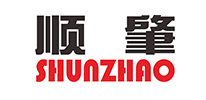Core Components of Diesel Emission Control Systems
Diesel Oxidation Catalyst (DOC) Functionality
The Diesel Oxidation Catalyst (DOC) plays a pivotal role in transforming harmful emissions from diesel engines into less harmful substances, such as carbon dioxide and water vapor. Its key function is to oxidize carbon monoxide, hydrocarbons, and diesel particulate matter, thereby improving air quality and engine efficiency. DOCs typically consist of precious metals like platinum, which, due to their high reactivity, are highly effective at the elevated temperatures present in diesel exhaust systems. Research and documentation from environmental authorities, such as the EPA, highlight that utilizing a DOC can lead to a marked reduction in harmful emissions, aiding in meeting stringent emission regulations and enhancing compliance with environmental standards.
Diesel Particulate Filter (DPF) Regeneration Process
Diesel Particulate Filters (DPFs) are essential for capturing and reducing soot from diesel exhaust emissions. They accumulate particulate matter over time, necessitating a regeneration process to sustain their effectiveness. DPFs undergo two forms of regeneration: passive regeneration, which occurs naturally during vehicle operation at high temperatures, and active regeneration, initiated by the engine control unit when passive measures aren't sufficient. Recent research underscores that regular maintenance of the DPF, including ensuring proper regeneration, can extend its lifespan by up to 50%. This not only maintains the vehicle's operational efficiency but also supports environmental goals by ensuring fewer particles are emitted into the atmosphere.
Selective Catalytic Reduction (SCR) & DEF Fluid
Selective Catalytic Reduction (SCR) is an advanced process designed to mitigate nitrogen oxides (NOx) emissions from diesel engines, using Diesel Exhaust Fluid (DEF) as a catalyst. This process involves spraying DEF into the exhaust stream, which then reacts with the NOx in the presence of a catalyst, resulting in the formation of harmless nitrogen and water vapor. The EPA reports that SCR technology can reduce NOx emissions by up to 90%, which is crucial for achieving compliance with Tier 4 emission standards. By significantly lowering these emissions, SCR systems not only enhance environmental sustainability but also improve the overall efficiency of diesel-powered vehicles, including various types of box trucks, whether they are used, electric, or powered by diesel.
Regulatory Compliance & Tier 4 Standards
EPA Tier 4 Final Requirements for Heavy-Duty Trucks
The EPA Tier 4 Final standards, introduced in 2014, have significantly increased the demands on emission control for heavy-duty trucks. These stringent standards focus on sharply reducing particulate matter and nitrogen oxide (NOx) emissions. To achieve compliance, manufacturers have been forced to adopt advanced technologies like Diesel Particulate Filters (DPF) and Selective Catalytic Reduction (SCR) systems in new trucks. Meeting these requirements is essential for manufacturers who want their heavy-duty vehicles to be eligible for sale within the United States market. The penalties for non-compliance can be incredibly severe, potentially costing companies millions in fines. Ensuring compliance not only helps manufacturers avoid financial loss but also supports environmental sustainability and public health initiatives.
Legal Consequences of Emission Tampering
Tampering with emission controls poses serious legal risks that can result in steep fines, penalties, and even criminal charges for vehicle owners and manufacturers involved. The Environmental Protection Agency (EPA) is highly vigilant in investigating cases of emission tampering, and they have historically imposed significant fines on companies found to be violating the established standards. For manufacturers and vehicle operators, adhering strictly to emission control guidelines is not just about maintaining operational vehicles but also about avoiding costly legal battles and damage to reputation. Legal frameworks highlight the importance of following these guidelines, underscoring the necessity for businesses to maintain vehicles according to the established emission standards for both financial and ethical reasons.
Maintenance Strategies for Optimal Performance
Preventing DPF Clogging in Box Trucks
Preventing DPF clogging is crucial to maintaining optimal performance and reducing emissions in box trucks. Regular inspections and cleaning strategies are vital for avoiding the buildup that can hinder engine efficiency and elevate emissions. Utilizing high-quality diesel fuel and ensuring the trucks operate at optimal temperatures can significantly minimize soot accumulation in the DPF. Moreover, statistics highlight that adopting proactive DPF maintenance routines can cut repair costs by an impressive 30%. This underscores the necessity of effective DPF management in fleet operations to ensure both economical and environmentally friendly transportation solutions.
Managing DEF Fluid Quality
Managing DEF fluid quality is essential for the efficiency of SCR systems, as contaminated DEF can lead to suboptimal engine performance and pose compliance challenges. Best practices in DEF management include storing the fluid in a temperature-controlled environment and ensuring only high-quality certified DEF is used to prevent negative impacts. Research indicates that maintaining DEF quality not only enhances emission reduction but also extends the lifespan of SCR systems. The emphasis on using uncontaminated DEF fosters a smoother operation of emission control systems, safeguarding both the environment and the vehicle’s performance capabilities.
Application in Commercial Fleets
Emission Systems in Isuzu/Ford Diesel Box Trucks
Isuzu and Ford diesel box trucks have set a high standard with their advanced emission control systems designed to comply with Tier 4 standards. These systems ensure that the trucks have a minimal environmental impact by reducing harmful emissions and enhancing fuel economy. Both manufacturers focus on reliability and efficiency in their designs, providing significant benefits such as lower emissions and better fuel efficiency that appeal to fleet operators. This has led to increased demand in the market as more businesses prefer diesel box trucks like Isuzu and Ford equipped with such cutting-edge technologies.
Electric vs. Diesel Box Truck Compliance
As environmental concerns rise, electric box trucks are becoming a popular option over traditional diesel engines. While diesel box trucks meet stringent emission standards, electric trucks offer the advantage of zero tailpipe emissions, making them particularly suitable for urban settings where air quality is a major issue. The shift towards electric fleet vehicles not only reduces environmental impact but also offers operational cost benefits. Companies transitioning to electric box trucks can potentially lower their long-term operational costs by an average of 40%, which can significantly enhance their financial performance.

